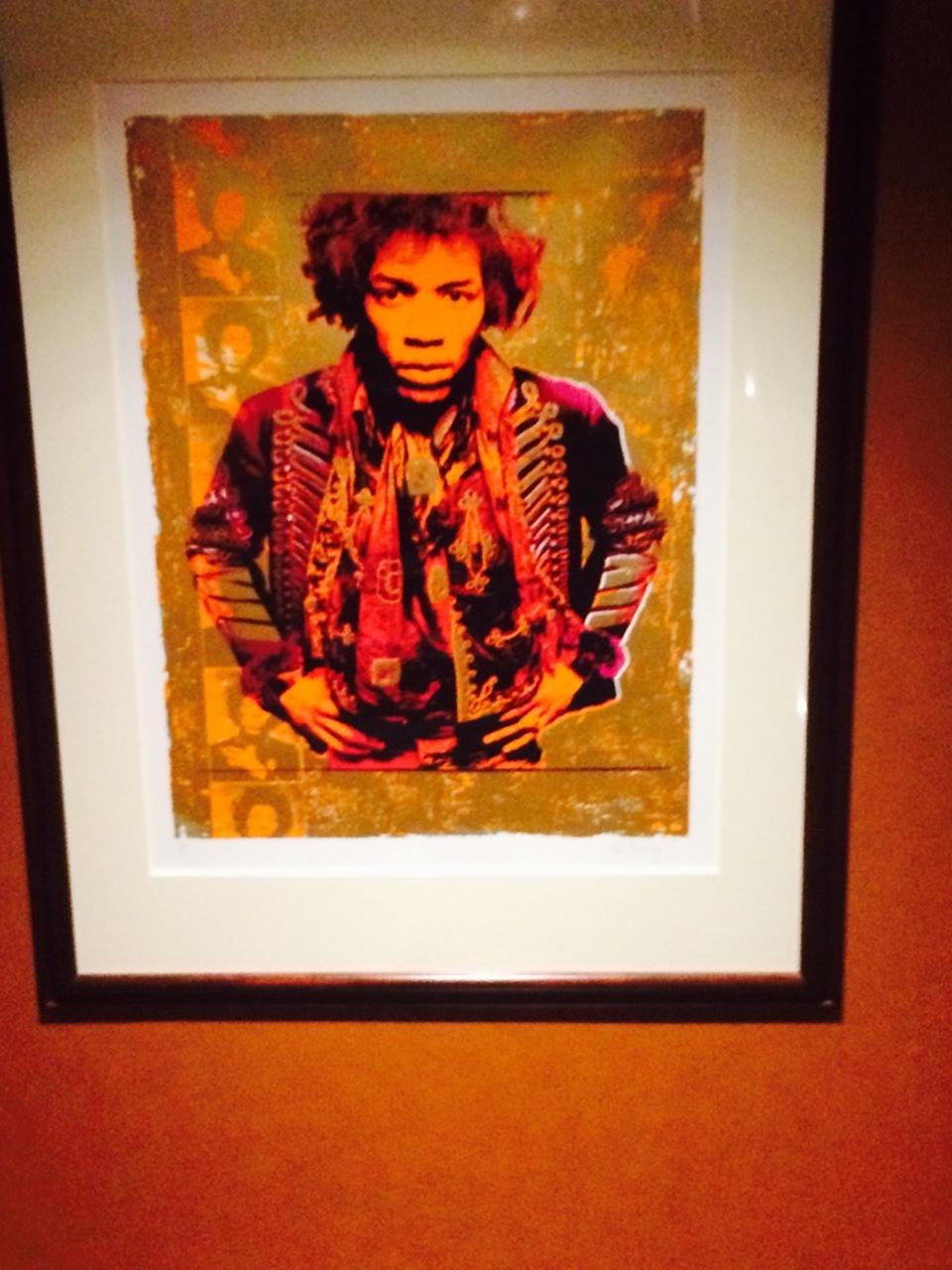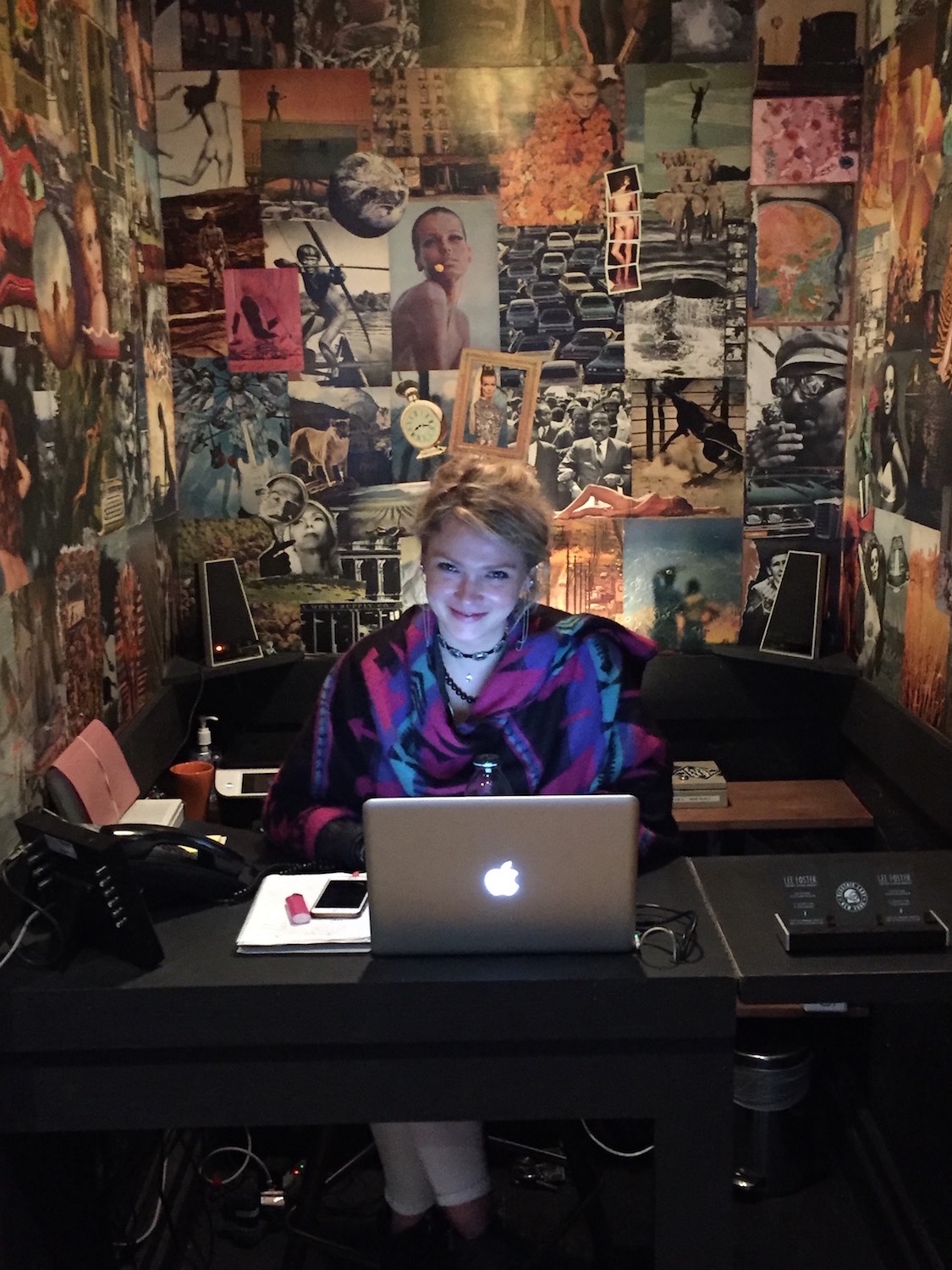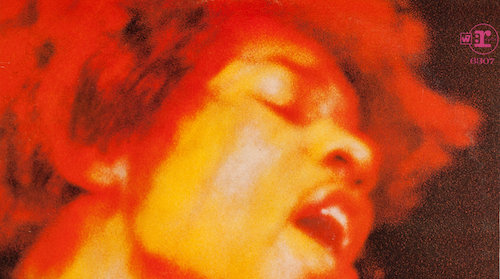
It was the first artist-owned recording studio, created by Jimi Hendrix with musicians in mind. He had been hemorrhaging money in studio fees due to his penchant for musical experimentation and jamming. As well, most recording facilities of the day were rather clinical spaces; in some the engineers even wore lab coats.
The location on West Eighth Street in New York’s Greenwich Village was a basement space that had been The Village Barn, a country and western nightclub, and then later a rock club, Generations. Hendrix had bought it to start his own music venue but instead installed his studio there.
The cutting and control rooms were designed by now-renowned studio architect and acoustician John Storyk. Its interior and decor – in a style one might call “mellow hippie” – were created with the comfort of musicians in mind. Electric Lady Studios‘ money-saving mission went mostly out the window as he insisted that the studio have the best equipment and the ideal design touches.
On August 26, 1970, Hendrix hosted the opening party for such stars as Steve Winwood, Eric Clapton and Ron Wood. Four tracks recently mixed at the new studio—”Dolly Dagger,” “Night Bird Flying,” “Ezy Ryder,” and “Straight Ahead”—were played on the monitors throughout the evening.
Related: Hendrix’s days in Greenwich Village

The list of many renowned artists that have tracked and/or mixed albums there is topped by the Rolling Stones, Led Zeppelin, Stevie Wonder, Clapton, Patti Smith, the Clash, Sheryl Crow and a host of others. In recent years Tony Bennett and Lady Gaga recorded their Love For Sale album there. Although many of New York City’s independent rock recording studios have closed in recent years due in part to the digital recording revolution, Electric Lady has survived.
Interesting factoids: One of the many streams that ran throughout Lower Manhattan, Minetta Creek, still flows underneath the building. Sump pumps run 24/7 to keep the studio dry. A number of people who have worked there believe that Hendrix’s ghost still resides there. The Clash’s Joe Strummer reported that a mystery guitar track showed up on a tape while the band was recording some of Sandinista! there.
Hendrix only got to spend about four weeks recording at Electric Lady as it was in the final stages of construction. The day after the opening, he flew to London to prepare for his forthcoming appearance at the Isle of Wight Festival. He died in London some three weeks later.
On the heels of celebrating the grand opening of Electric Lady Studio in New York, #JimiHendrix was whisked away to #London in prep for his European Tour. Snapped here is a photo of Jimi at #Heathrow as he arrived in England on August 27, 1970. #IsleOfWight pic.twitter.com/XMX1EFU972
— Jimi Hendrix (@JimiHendrix) August 27, 2023
One of the many classic rock songs cut at Electric Lady Studios…


1 Comment
“He had been hemorrhaging money in studio fees due to his penchant for musical experimentation and jamming.” As a absolute Hendrix fan and fanatic, honesty compels me to recall that Noel Redding reported that during the recording of “Electric Ladyland” (and which had a part in driving him out of The Experience, along with the extreme fatigue that all their band felt) They would typically book a studio session starting in the afternoon, where Redding and Mitchell would show up along with the engineers and producer, and then sit and wait — many times until the AM hours, when JImi would finally stroll in with an accompanying entourage in full party mode. THEN, the experimentation and jamming would commence until the ultra wee hours — sometimes without The Experience, or at least Redding, who had grown fed up and gone home. That kind of everyday practice will tend to run your studio fees into the hemorrhage levels. It is incredibly cool that Electric Lady Studios is still operating though. As for the rest? Who can say? With that stream running below it’s floors and the constant need for sump pumps, it’s probably not an ideal place to leave equipment for very long though.